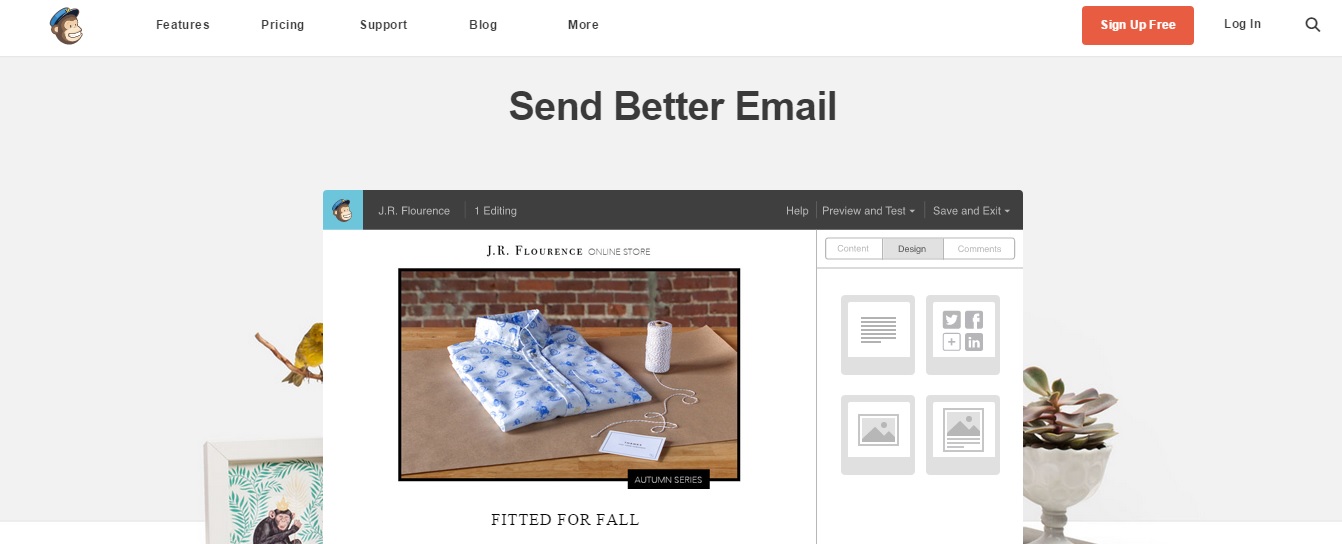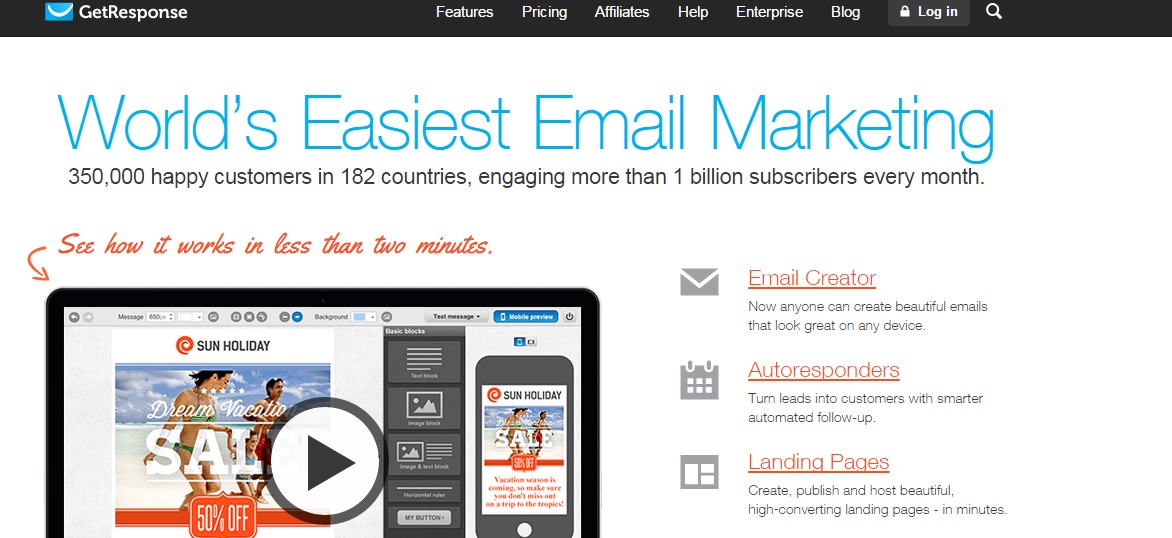Mailchimp vs Getresponse: which e-mail marketing service is best for your needs?
When you are in the process of growing your e-commerce business, getting a mailing list up and running is essential to your long term success.
As such, signing up for an e-mail marketing service should be at the top of your list of things to do when you are getting started.
To help you in this task, we have compared two leading providers of online e-mail marketing services (Mailchimp and Getresponse) so that you can decide which one will best meet your needs.
Check them both out below…
Mailchimp
Features
Playing off its friendly image and site mascot, Mailchimp offers new e-marketers a series of fun and helpful videos and e-books that will help them learn and get started with the Mailchimp interface.
Another intuitive feature that results-seeking entrepreneurs will love includes a tool that helps you to optimize the send time for e-mail campaigns to maximize campaign impact.
Keeping in mind when your prospects will be at their computer is vital when reaching out to them is crucial, making this utility a godsend.
Finally, Mailchimp’s pervasive analytics software will help track the metrics that will allow you to gauge the effectiveness of your campaigns in minute detail.
As a result, you will be able to de-emphasize ineffective processes and double down on what’s working in your business.
Interface
Mailchimp’s most obvious advantage to the first time user is its smooth and clean user interface, which has made it a favored e-mail marketing program by beginners.
However, those that want to dig deeper into Mailchimp’s more advanced tools may be intimidated, as they can be a bit too complex to comprehend and use for those with simple e-mail marketing needs.
That being said, Mailchimp boasts a ton of pre-made templates, making it easy to get a campaign off the ground.
Pricing
Mailchimp is well-loved by low volume users, with its forever free plan being very popular among this crowd.
It allows you to send up to 12,000 e-mail messages a month if you have less than 2,000 subscribers without having to cough up a single dime.
This plan sacrifices a good deal of useful features though, and if you want to access them, they can get expensive for small/medium sized businesses with lots of e-mail subscribers.
Once you eclipse 10,000 subscribers, Mailchimp can cost you at least $75/month for a bare bones plan.
Getresponse
Features
Getresponse offers many of the features that Mailchimp has, including a wide range of pre-designed e-mail templates, as well as in-depth stats tracking that allows you to make decisions just as effectively as those using the competition’s software.
In addition to this, Getresponse offers additional utilities that will make your experience with them a productive one.
These include split testing campaigns, a landing page creator that will enable you to craft a compelling sales site that will have your customers pulling out their credit cards, and social sharing tools that will help you spread the word about your new product or service beyond the bounds of your e-mail list.
Interface
While the other guys have a cute monkey as their logo, Getresponse offers an interface that is just as simple and straightforward to navigate.
Finding your way around its back office is a breeze, as are preforming standard tasks such as creating campaigns and setting up autoresponders, which feel far easier than they should.
The usability of complex functions has also improved by leaps and bounds over the past few years, allowing Getresponse to close the gap on one of its former weak points.
Pricing
For those that do a lot of volume via e-mail, Getresponse is a much better value than Mailchimp. At $65 for 10,000-24,999 subscribers, it is almost 20% cheaper to go with Getresponse than to sign up with Mailchimp, and if you lock in the service for 12 months, it only comes out to $53.30 a month, or more than 25% less than if you went with Mailchimp.
Additionally, beginners will fare no worse on price with Getresponse, as the $15/month charge is the same as Mailchimp’s offer for 1,000 – 1,499 subscribers.
Once you cross 2,500 subscribers, Getresponse is the better value, as you only pay $25 a month compared to Mailchimp’s rate of $30/month.
Our verdict
Those that need to get the most out of their marketing budget will find Getresponse to be the superior choice (especially if subscriber numbers exceed 10,000 and above).
Prices are lower, and the user interface is almost as slick as Mailchimp’s, making it the obvious choice for the serious entrepreneur.
Those just starting out may find Mailchimp to be the best choice when bootstrapping in the early weeks, but the functionality of Getresponse and competitive pricing for those with just over 1,000 subscribers makes this company a compelling upgrade for new e-business people once they begin to get some traction in their chosen niche.








